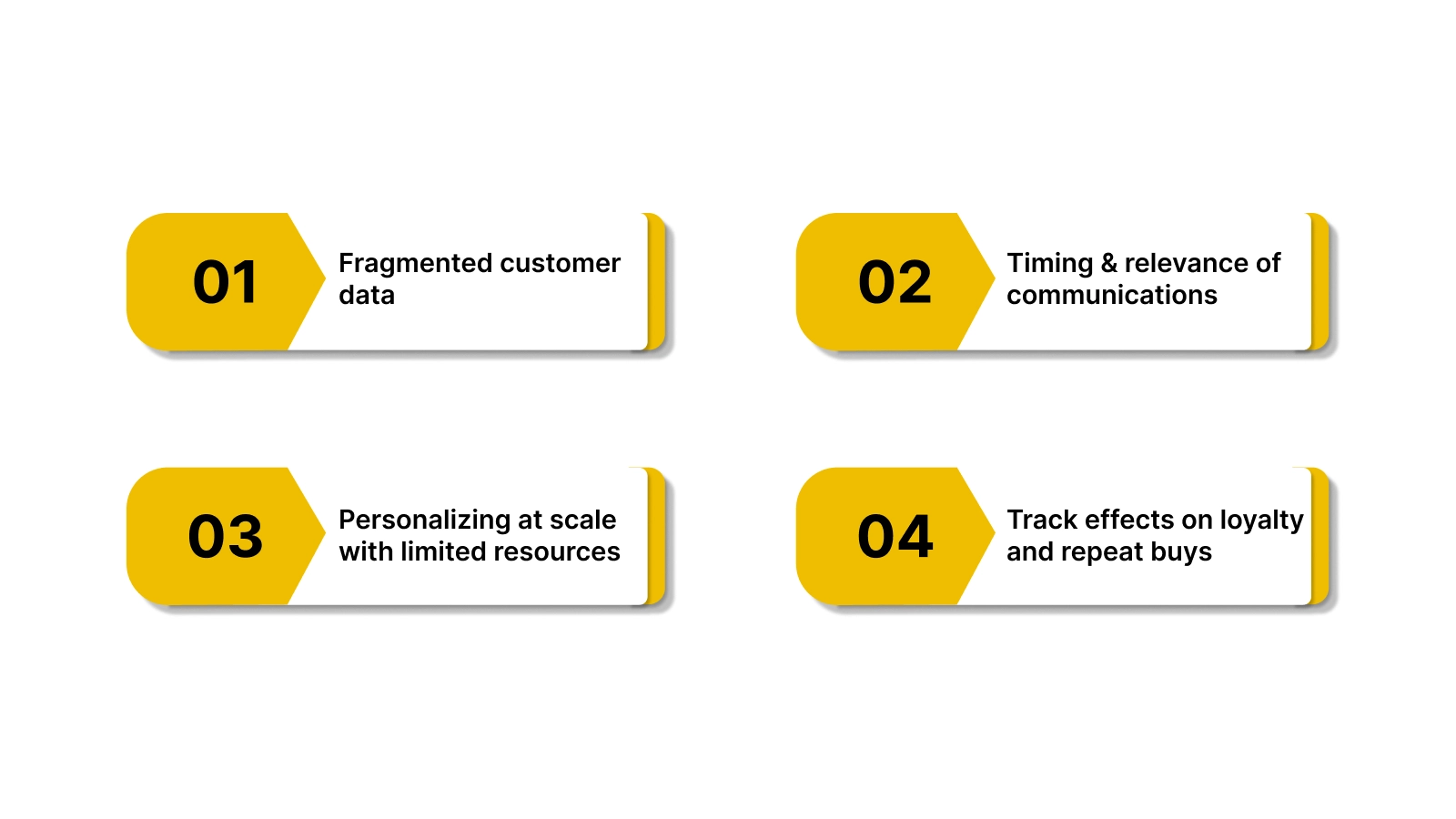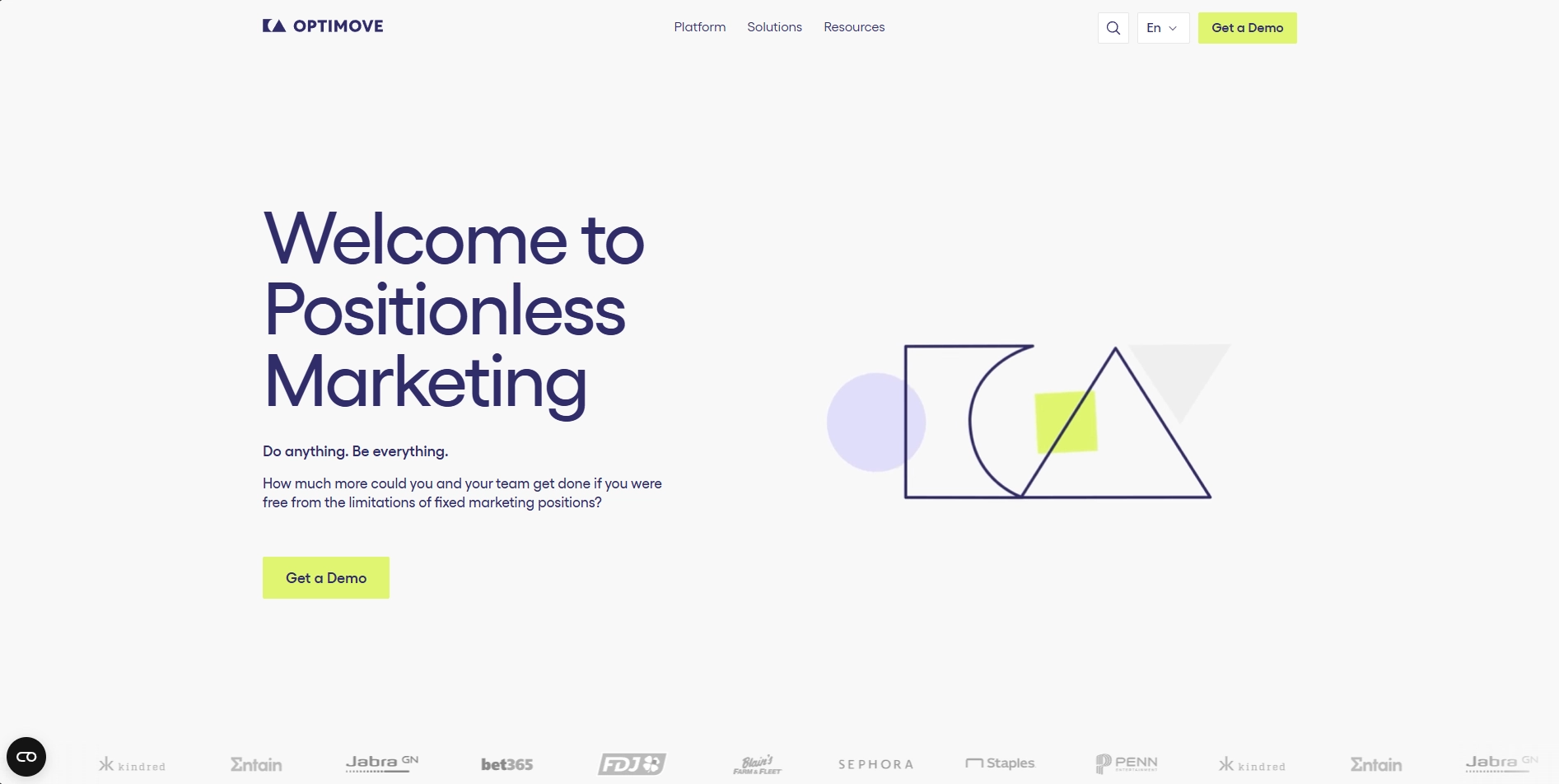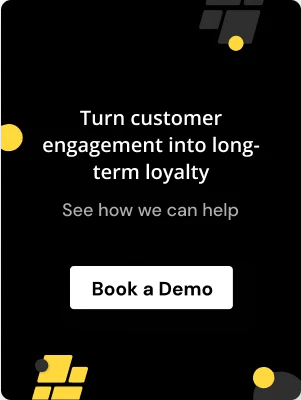.avif)
.avif)
Post-purchase engagement is an important moment that determines whether a customer will return or fade away. With the rise of e-commerce, brands now face the challenge of keeping customers engaged after the first sale. It’s no longer enough to simply offer a great product; personalized, timely post-purchase interactions are key to building long-term loyalty.
AI has become a key solution in this space, helping brands deliver personalized experiences at scale. In fact, AI-powered next best experience capabilities can enhance customer satisfaction by 15 to 20 percent, increase revenue by 5 to 8 percent, and reduce the cost to serve by 20 to 30 percent.
In this blog, we’ll dive into how AI tools can help brands optimize post-purchase loyalty campaigns and ensure repeat business.
Overview
- Post-purchase engagement plays an important role in building long-term loyalty and encouraging repeat purchases.
- AI helps overcome challenges like fragmented data by providing personalized, real-time interactions across multiple channels.
- Real-time decision-making powered by AI ensures that communications and offers are timely and relevant.
- AI tools automate personalization at scale, allowing brands to engage customers effectively with minimal manual effort.
- AI-driven tools like Nector enable seamless integration, optimizing post-purchase loyalty campaigns and enhancing customer retention.
Why the Post‑Purchase Phase Matters for Loyalty?
Post-purchase engagement plays a vital role in building long-term customer loyalty. While the first sale attracts a customer, how you engage them afterward determines if they return, driving repeat business and boosting customer lifetime value.
The Impact of Post‑Purchase Engagement on Retention
Post-purchase interactions are essential for building loyalty, making customers feel valued beyond the transaction. By engaging customers with personalized communication, rewards, and offers, brands can increase retention and encourage repeat purchases.
For instance, a fashion retailer could send a thank-you message with loyalty points right after a purchase. This immediate follow-up strengthens customer connection, encouraging further engagement and making them feel appreciated. This, in turn, enhances long-term loyalty.
Also Read: Inside Vilvah’s 50%+ Retention Success - Powered by Nector
Key Post‑Purchase Loyalty Challenges to Address

The post-purchase phase comes with unique challenges that many brands overlook. From managing data to delivering timely communication, these obstacles can affect your ability to build lasting customer relationships. Below are the primary hurdles e-commerce businesses face when trying to engage customers post-purchase.
1. Fragmented customer data
Customer data often resides in multiple systems, e-commerce platforms, CRM tools, and email marketing tools, making it hard to get a full view of the customer journey.
2. Timing and relevance of communications
One of the biggest challenges brands face is delivering timely communications that feel relevant. Sending a generic email asking for feedback weeks after a purchase doesn’t engage customers effectively.
3. Personalizing at scale with limited resources
Personalizing post-purchase interactions for each customer can be overwhelming, especially for small teams with limited resources. You might have to deal with a manual burden to give customers a tailored experience if AI isn’t here to help.
4. Measuring impact on loyalty and repeat purchases
Tracking the success of post-purchase campaigns without the right tools can be difficult. Tracking key metrics such as repeat purchase rate, customer lifetime value (CLV), and engagement with loyalty programs can become a huge issue.
Fragmented data, irrelevant communication, and scaling personalization can stall post-purchase loyalty. However, by integrating AI, brands can overcome these hurdles, ensuring timely, personalized engagement that drives long-term loyalty and sustained repeat business.
How AI Addresses These Challenges?
AI can provide solutions to the common hurdles brands face in optimizing post-purchase loyalty. By automating personalization, analyzing data in real time, and predicting customer behavior, AI takes the guesswork out of retention. Here’s how AI solves the most pressing challenges:
1. Clean, connected data as the foundation
AI requires clean, unified data to function effectively. AI tools integrate customer data from different touchpoints, purchase history, browsing behavior, and post-purchase interactions into a single, actionable profile. This allows brands to personalize their communications and rewards in a meaningful way, rather than relying on fragmented information.
2. Predictive and real‑time decisioning
AI allows businesses to predict future behavior based on past actions. For example, predictive analytics can identify customers who are likely to churn, allowing brands to intervene with targeted offers or rewards before they lose the customer. Real-time decisioning enables brands to act instantly, such as triggering a personalized offer or sending a reward when a customer reaches a certain milestone.
3. Personalization and dynamic reward optimization
AI tools analyze customer behavior and preferences, adjusting rewards dynamically to keep customers engaged. For instance, if a customer frequently purchases certain products, the AI system might offer them a special discount or bonus points for related items. This type of personalization ensures the customer feels valued and motivated to continue purchasing.
4. Cross‑channel triggers and communications
Customers engage with brands across multiple channels, including email, SMS, apps, and social media. AI enables seamless communication by determining the best channel and timing for each individual. Whether it’s sending a reward reminder through SMS or offering an exclusive deal via email, AI ensures that the communication is not only timely but also aligns with customer preferences.
5. Analytics, testing, and continuous improvement
AI provides ongoing insights into how your post-purchase campaigns are performing. By running A/B tests, brands can assess which messages or offers resonate best with customers. These insights allow for constant optimization of the loyalty program, ensuring it stays relevant and effective in driving repeat business.
Now that we know how AI can address several challenges, let’s have a look at some of the best AI tools available for post-purchase loyalty optimization.
Also Read: Referral Program Ideas That Boost Customer Acquisition (Without Breaking the Bank)

Top 5 AI Tools for Post-Purchase Loyalty Optimization
To truly optimize your post-purchase loyalty strategy, choosing the right AI tools is key. Here are the top platforms that seamlessly integrate personalization, automation, and real-time decision-making to enhance your loyalty campaigns.
1. Nector
.webp)
Nector offers a robust, AI‑ready loyalty platform for e‑commerce brands. It supports personalised post‑purchase engagement by enabling brands to send tailored points, referrals and rewards based on customer behaviour and preferences. With direct integration into Shopify (and other platforms), it synchronises customer and order data, enabling smoother automation of loyalty touchpoints. Its built‑in analytics dashboards and triggers help brands keep customers engaged, encourage repeat purchases and improve lifetime value while reducing manual campaign workload.
2. Optimove

Optimove stands out with its advanced predictive analytics, allowing brands to automatically segment customers based on behaviors, demographics, and purchase history. Besides, forecasting future actions enables brands to send the right offers at the right time. It’s ideal for managing personalized journeys and post-purchase campaigns, boosting engagement and encouraging long-term customer loyalty.
3. HubSpot

HubSpot combines its CRM, email marketing, and AI capabilities to automate and personalize post-purchase interactions. It enables brands to build tailored customer journeys, send personalized emails based on recent purchases, and reward customer loyalty with relevant offers. With HubSpot, brands can easily track engagement and refine their loyalty strategies for greater retention.
4. Yotpo

Yotpo combines AI with user-generated content to automate product review requests and reward customers for referrals. By analyzing feedback and purchasing behavior, it generates personalized offers and loyalty rewards. This helps brands build trust, enhance customer experiences, and encourage repeat purchases, ultimately promoting stronger loyalty.
5. Smile.io
.webp)
Smile.io offers an AI-powered platform for creating loyalty programs that reward customers for actions such as making purchases, referring friends, or sharing on social media. It adapts to individual behavior, offering customized rewards and incentives. This flexibility makes Smile.io ideal for small and large businesses looking to enhance customer engagement and retention at scale.
Overall, these AI tools not only automate but also fine-tune every aspect of your post-purchase loyalty campaign. This ensures your customer interactions are timely, personalized, and impactful; ultimately driving higher customer retention and repeat sales. Now, let's make it simpler for you by discussing various criteria to evaluate these AI tools.
Criteria to Evaluate AI Tools for Post‑Purchase Loyalty Campaigns

Selecting the right AI tool is important to ensuring that your post-purchase loyalty campaign is effective. Here’s what to look for:
1. Data integration and connectivity
AI tools must be able to integrate with your existing systems, including your e-commerce platform, CRM, and loyalty program. Seamless data connectivity allows the AI tool to access and analyze customer data from all touchpoints, ensuring personalized, real-time interactions.
2. Real‑time triggers and decision‑making
Real-time decisioning is essential for post-purchase loyalty campaigns. Choose a tool that can make decisions on the fly, such as triggering personalized emails or loyalty rewards based on a customer’s behavior immediately after purchase.
3. Personalization engine
The AI tool should have a strong personalization engine that segments customers based on behavior, purchase history, and preferences. This ensures that each customer receives the most relevant offers, leading to higher engagement and retention.
4. Multi‑channel orchestration (email, SMS, in‑app, etc.)
The tool should be capable of orchestrating communication across different channels, ensuring a seamless experience for customers. This ensures that loyalty offers reach customers on their preferred channels.
5. Analytics & optimization dashboard
A robust analytics and optimization dashboard allows you to track key metrics, measure the success of campaigns, and identify areas for improvement. Look for a tool that provides clear, actionable insights to refine your strategy.
6. Scalability and ease of use for small teams → large brands
Your tool should grow with your business. Ensure that it is scalable, easy to use for small teams, and capable of handling larger customer bases as your business expands.
7. Security, compliance and vendor track record
With customer data at stake, it’s important that the AI tool complies with privacy regulations and provides secure data handling. Choose vendors with a proven track record in e-commerce and loyalty programs.
Choosing the right AI tool with seamless integration, real-time decision-making, and robust analytics motivates brands to personalize every touchpoint. It drives stronger customer loyalty and scalable growth while maintaining data security and compliance.
Implementation Roadmap – From Sale to Loyalty Engine
To maximize the impact of your AI-powered post-purchase loyalty campaign, follow this strategic roadmap to ensure a smooth and effective process:
- Audit existing post-purchase touchpoints: Review your current processes to identify gaps in communication, data tracking, and engagement.
- Unify and cleanse customer data: Consolidate data across sources for accurate, up-to-date customer profiles that enable personalized interactions.
- Define loyalty objectives and post-purchase triggers: Set clear goals and triggers for post-purchase actions, such as sending rewards or review reminders.
- Choose and integrate an AI tool + loyalty platform: Select an AI tool that integrates seamlessly with your loyalty platform, like Nector, for simplified automation.
- Set up automation: reward triggers, communications, offers: Automate touchpoints to send personalized offers, rewards, and reviews based on customer actions.
- Track metrics, test variations, optimize over time: Measure key metrics like repeat purchases and CLV, and optimize strategies based on data.
- Scale the workflow for different team sizes and budgets: As your business grows, scale your campaigns to match resources, ensuring continued efficiency and effectiveness.
By following this roadmap, you can build a seamless and scalable post-purchase loyalty engine that engages customers, drives repeat purchases, and boosts long-term retention.
Also Read: 7 Different Loyalty Strategies and Types of Loyalty That Actually Work
Metrics to Track & Prove ROI
Tracking the right metrics is essential for measuring the success of your post-purchase loyalty campaigns. Here are some metrics you must track:
Consistently tracking and analyzing these metrics will let you optimize your loyalty efforts. It also uncovers growth opportunities and ensures your campaigns are always aligned with your business goals for long-term customer engagement.

Why Nector Stands Out for Post‑Purchase Loyalty?
Nector is an AI-powered loyalty platform designed to optimize and automate post-purchase engagement for e-commerce businesses. Seamlessly integrated with Shopify, Nector personalizes interactions and rewards using real-time decision-making and predictive analytics, ensuring timely, relevant touchpoints that drive long-term customer loyalty and retention.
What you can get with Nector:
- Seamless integration with Shopify for easy automation: Nector integrates effortlessly with Shopify, automating post-purchase loyalty campaigns, syncing customer data, and ensuring smooth interactions without disrupting existing workflows.
- AI-powered personalization for tailored post-purchase experiences: Nector personalizes loyalty rewards and communications, delivering unique offers and recommendations based on customer behaviors and preferences, creating deeper engagement.
- Real-time decision-making and reward optimization: Nector uses real-time data to trigger timely, relevant loyalty rewards based on customer actions, maximizing engagement and repeat purchases.
- Cross-channel engagement through email, SMS, and apps: Nector ensures customers stay engaged across channels by delivering personalized communications through their preferred medium, such as email, SMS, or app notifications.
- In-depth analytics to measure and refine loyalty strategies: Nector’s analytics dashboard tracks key metrics like repeat purchases and CLV, enabling brands to continuously refine strategies and optimize campaign effectiveness.
With Nector, e-commerce businesses can transform their post-purchase journey into a dynamic loyalty engine that supports stronger customer relationships and boosts retention.
Conclusion
Optimizing post-purchase loyalty campaigns with AI is essential for improving customer retention and boosting repeat purchases. By solving challenges like data fragmentation and timing, AI tools help automate and scale loyalty efforts, keeping customers engaged long after their first purchase.
Nector is a powerful tool for e-commerce businesses, offering AI-driven personalization and seamless integration. With Nector, you can automate your loyalty campaigns, personalize rewards, and engage customers across channels, making retention effortless.
Looking to enhance your post-purchase loyalty strategy? Start your free trial with Nector today and see how easy it is to create personalized, automated post-purchase campaigns that drive repeat business.
FAQs
1. How is AI being used in loyalty programs?
AI enhances loyalty programs by analyzing customer data, predicting behaviors, and personalizing rewards in real time. It helps brands deliver tailored experiences, optimize engagement, and ensure timely, relevant communications that boost customer retention and lifetime value.
2. How do AI algorithms optimize ad campaigns?
AI algorithms analyze vast datasets to identify the best-performing ad creatives, targeting, and timing. By learning from past campaign data, AI optimizes audience targeting, bids, and content, ensuring ads reach the right people at the right time for maximum ROI.
3. Which AI tools are recommended for improving marketing efforts effectively?
Tools like Nector, HubSpot, and Optimove implement AI to personalize customer journeys, automate email marketing, optimize ad spending, and analyze performance. These platforms help marketers refine their strategies, boost engagement, and improve overall marketing efficiency.
4. What are some examples of AI-powered tools or platforms that can optimize marketing campaigns?
Platforms like Google Ads AI, Mailchimp's Smart Recommendations, and Hootsuite’s AI-powered scheduling tools use machine learning. With this, they can optimize marketing campaigns by automating processes, personalizing content, and analyzing performance to enhance overall effectiveness and engagement.
FAQs
Start Building Customer Retention That Lasts









